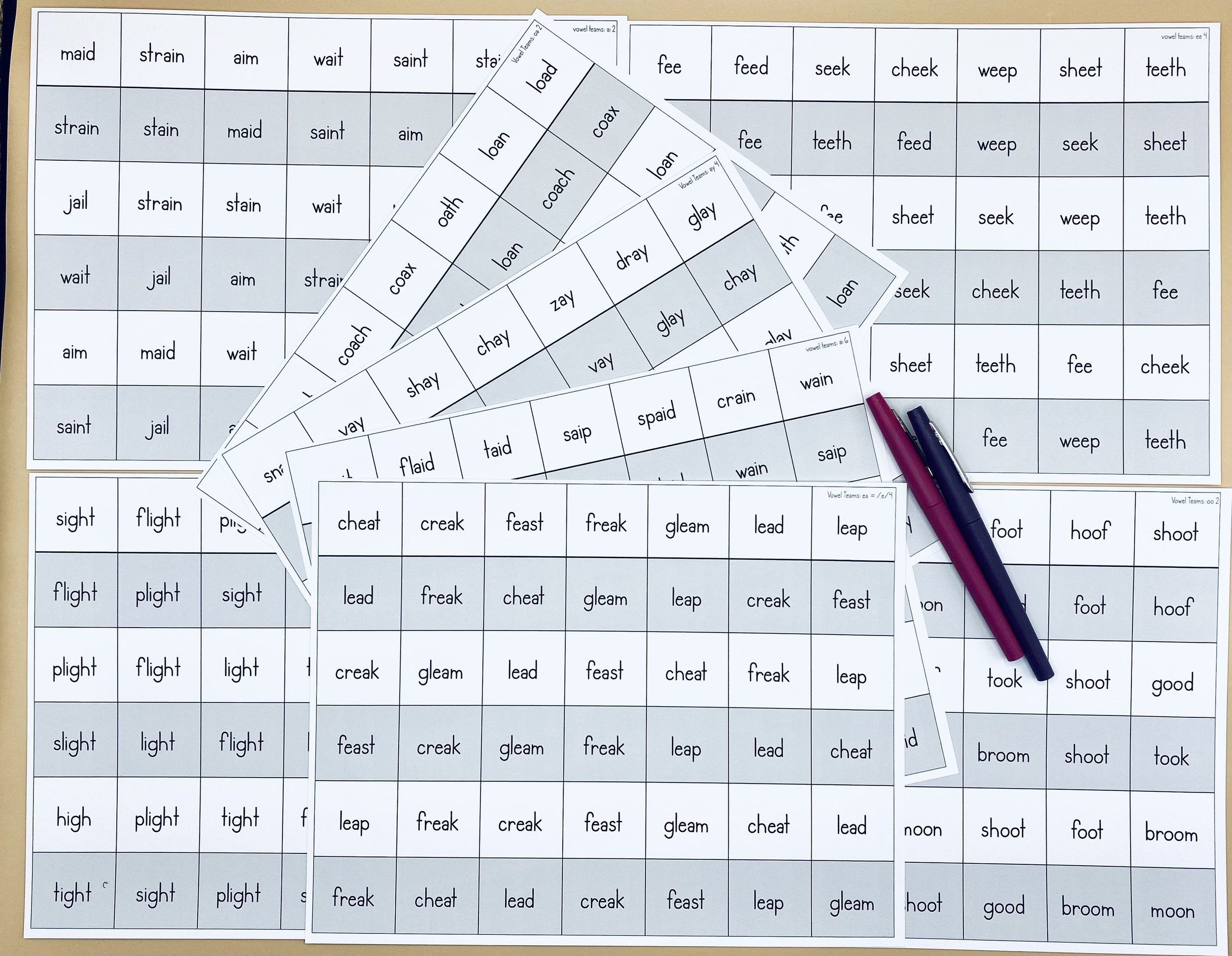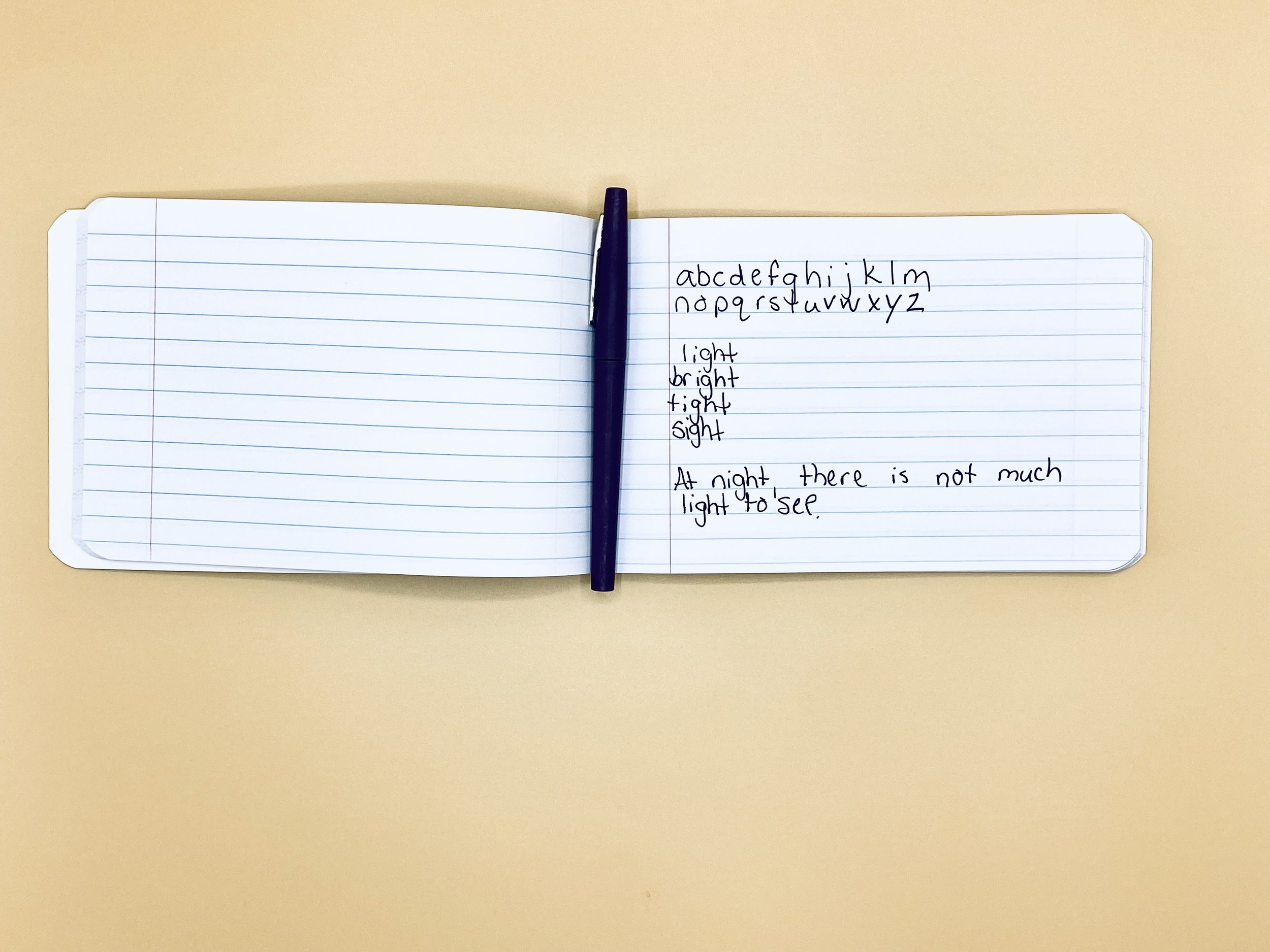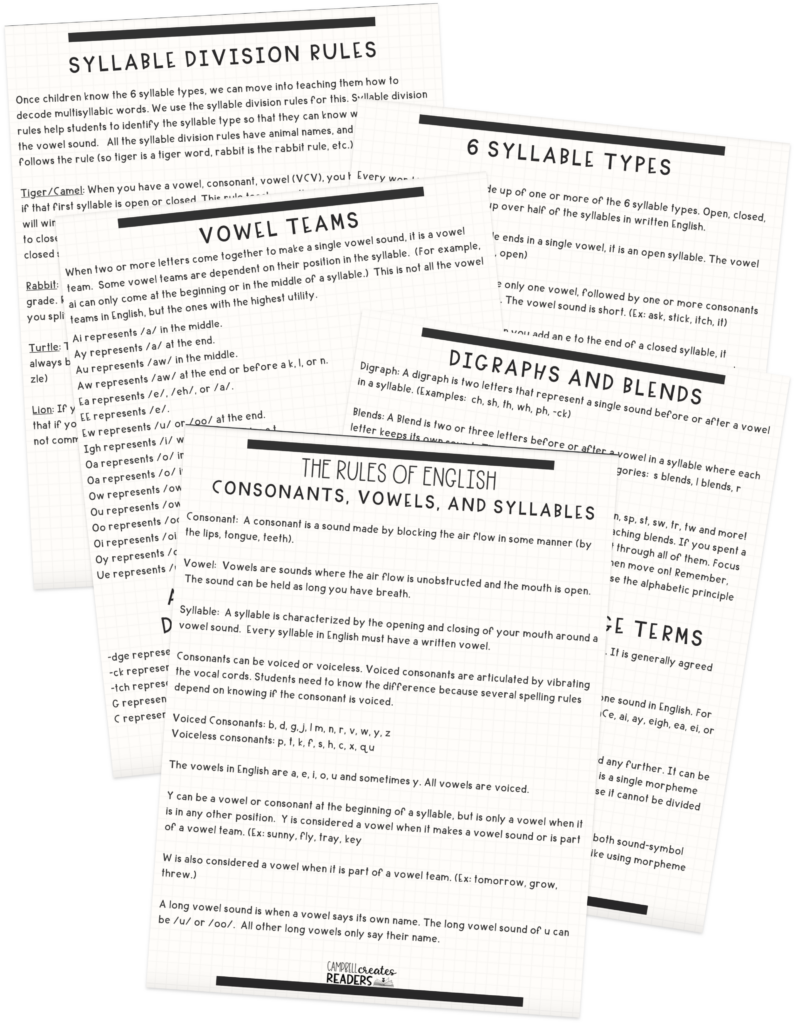
Share This:
I love teaching children how to read. I enjoy teaching in general, but teaching phonics is just SO. MUCH. FUN. So today, I want to talk about 10 different ways I practice a phonics skill with kids. Each activity is something I do with my kiddos, and all of them are meaningful ways to practice reading and writing. I am no longer a classroom teacher (I pull kiddos for intervention), but these activities can also be completed whole group.
A couple of notes before we get started, though. I do not spend an equal amount of time on all of these tasks, and I do not do all of these tasks every day. Instead, I try to think about how I can incorporate authentic reading and writing daily. At the end of the day, children have to have lots and lots of time to read and write skills they have been taught if we want them to be successful. Always keep in mind your goal for your children, and ask yourself it this activity will help achieve that goal. Just because an activity is fun or seems neat does not automatically mean it is getting you closer to your goal.
My interactive notebooks are a product of my Orton Gillingham training. I love having a scaffolded, teacher-led way to practice a phonics skill. At the end of the school year, there is something so satisfying about having a notebook full of the skills that have been taught.
The interactive notebooks are not meant to be a worksheet or an independent activity. Instead, each notepage is intended to give children initial practice in the skill being taught. I know that sometimes we can feel lost knowing where to start. I made these so I know that no matter what, we have a place to begin with our phonics skills.
The top portion includes the rule (ex: y says /i/ at the end of single syllable words.) Then, the bottom portion is a guided activity.
I will say, the pandemic has hit my game-play hard. In all honesty, though, it’s given me time to think about my practices. I used to play games in my intervention groups every Friday. Looking back, I wonder if spending every Friday on a reading game was getting me closer to my goal. I certainly believe that games are great practice, but in an intervention setting I think I was using them too often!
That being said, there’s still a lot of value to playing games. They can be a part of a center, or you can use them as part of your whole group or small group instruction. Board games, once taught, are a great, authentic practice for students to do independently. I made a series of board games—all of them follow the same setup so that once you know how to play the game, you don’t have to spend a lot of time teaching them how to play again. The games include practice for the alphabet, CVC words, digraphs, blends, magic e, vowel teams, r-controlled vowels, and diphthongs!
I’ve talked before about the trouble with an over-reliance on sorting words. One way we can still get students to think about sound-symbol correspondence (without simply matching) is by including picture sorts. So how are picture sorts any different from traditional word sorts? Actually, since they are pictures, isn’t it easier than a traditional word sort?
Picture sorts are different from word sorts because they are not given the grapheme straight away for each word they are sorting. They have to connect the phoneme to the appropriate grapheme header. Think about it like this: if you give children words with short a and magic e (tap, tape, stack, make, grape, etc.) all they have to do is look at the end of the word to see that e at the end and they can do the entire activity. If you have pictures where students have to think about the vowel sound, that’s much more powerful. You are having children do what good readers do—match sound to print, not matching print to more print.
I have a set of 41 different sorts that I’ve created, and I use them often in my intervention groups.
When thinking about how I teach reading to my children, I’m always thinking about going from the smallest unit to the largest unit. So before I give my students an entire reading passage, we read individual words and isolated sentences.
It’s helpful to start with words in isolation. This way, students get practice with the targeted skill and not much else. Then, you can move on to reading sentences with the targeted skills. This is a scaffolded way to give kiddos access to the code.
Decodable texts are one component of my lesson that is completed daily, and we spend more time on this task then any other reading task. If we want our children to become successful readers, we have to give them ample amount of time practicing the skills we have taught them. Decodable texts do that. A decodable text is a text where the phonics skills have been controlled. Almost all of the words should be ones that the students are able to decode, and a large portion are skills currently being studied.
I have to confess something—I’ve started and stopped making my own decodable texts many times. Every time I get into it, I realize how difficult it is to do it well. And then I think to myself, “Why should I bother when I already have access to amazing decodable texts” and I stop. Those decodable texts I use the most? My answer will always be The Literacy Nest. I have used the Literacy Nest’s decodable passages for years. They are affordable and they are a powerful tool. I also enjoy SPIRE, Voyager Sopris’ Power Readers, and the decodable texts recently released by Mrs. Winter’s Bliss. (Links at the bottom!)

Fluency grids are a great addition to your phonics practice routine.
Fluency grids are the practice I didn’t know I couldn’t live without. We want our children to become automatic with their word recognition. Fluency grids are a way to promote automatic word recognition of taught skills. In a fluency grid, there are 7 words. All 7 words are repeated on each subsequent line, but in a different order.
It sounds weird, right? But you will be amazed when you see a kiddo starting a fluency grid reading it line by line, only to finish that last line reading each word with automaticity.
I use fluency grids mostly as a reading review activity. We will read a fluency grid a few times, then I allow them to take them home.
Word chaining has become my favorite activity for students this year. In word chaining, you give students a word. They write down the word Then, with each subsequent word, they change one sound. I typically do this activity on a dry erase board, but you can also use paper. So, a child who starts with mug would change one sound to make lug, then bug, then bun, and so on.
This is such a powerful tool to use with students. They have to think about where the sound changes in each word. One suggestion, though, is to make sure that they are saying the sounds and blending the word again each time after they read it. So, after they change cat to bat, make sure they say /b/-/a/-/t/ and then blend to read bat again.
There is nothing that makes magnetic word building better than any other way of writing. For me, using magnetic letters is an engagement technique. When I can see my I’m losing my kiddos, I pull out our magnet boards.
Magnetic word building is handled like dictation, except the children aren’t doing any physical writing. You say a word, children tap the sounds, and then they use magnets to spell it. I have magnetic boards from the Wilson store and I really, really like them. I especially appreciate that every letter has a place where it needs to go up top, so that students don’t mix them up. I also have graphemes tiles for digraphs, r-controlled vowels, trigraphs, vowel teams, etc.
One note of caution—don’t overdo it. We want our children to be able to physically write words with the skills we have taught them. If we only use magnetic tiles, we are not giving them the chance to engage in the physical task of writing.
Sound-symbol mapping is a technique you can use to promote orthographic mapping. Orthographic mapping is the process by which we remember words for automatic and effortless retrieval. It’s what helps words become “sight words” for us.
Sound-symbol mapping is a process we use to help map phonemes to the graphemes that represent those phonemes. You will say a word, then the child will repeat the word and tap the sounds. Next, the student highlights or blocks in however many boxes there are for that sound. Finally, they write the word, where each box represents one sound. It is incredible to see how their ability to identify graphemes grows.
I was recently working with a group of 4th graders. Some of them were getting overwhelmed with the skills and started to write random letters in words. This has helped to eliminate that. We identify the number of sounds, and then the boxes help us to think about spelling the word sound by sound.

I’m not sure when and where dictation got a bad reputation. It could stem from writer’s workshop—in writer’s workshop, students are encouraged to come up with their own ideas and write about that. This notion of a teacher-directed writing activity is almost anathema. But the truth is, sometimes we just have to tell children what we want.
After we have practiced a skill, child must have time to both read and write that skill. With dictation, you are telling students the words and sentences you want them to write. This is guided practice for them to practice target skills before they do it on their own in their writings. While this can be done on dry erase boards, I suggest making sure children get time each week to write on paper. We want to ensure they can complete the tasks we want of them in the medium that will be required.
Normally, just because of time restraints, I have my students write 5 words and then a sentence. In the past, I’ve also set a timer and had them challenge themselves to see how many words they could write in a certain amount of itime.
Look, I’ve given you a lot of stuff and, let’s face it, a lot of links. I’m going to tell you what I tell everyone, though—baby steps. You don’t have to incorporate all 10 of these activities. You don’t have to buy a single thing to be an effective teacher (okay, paper, pencil, and something to read is probably the minimum). What you do need to have are goals in mind. What do you want your children to be able to do as a result of your instruction? And then every activity you plan should work towards that goal. It won’t be perfect tomorrow, and it won’t be perfect next week either. But as long as we continue to work towards our goals to build proficient readers, we can change the trajectory of their reading lives.
Decodable Texts: Emily Gibbons, SPIRE, Power Readers, Mrs. Winter’s Bliss
Magnetic Word Building: I use the Wilson magnetic boards. You have to buy the tiles separately.
Dictation: No special materias needed, just make sure they are writing on appropriate paper. For K-2, I suggest paper with a midline.
Share This:

Savannah Campbell is a K-5 reading specialist. She has taught her entire 12-year teaching career at the school she went to as a child. She holds two master’s degrees in education from the College of William and Mary. Savannah is both Orton-Gillingham and LETRS trained. Her greatest hope in life is to allow all children to live the life they want by helping them to become literate individuals.

Savannah Campbell is a K-5 reading specialist. She has taught her entire 12-year teaching career at the school she went to as a child. She holds two master’s degrees in education from the College of William and Mary. Savannah is both Orton-Gillingham and LETRS trained. Her greatest hope in life is to allow all children to live the life they want by helping them to become literate individuals.
Feeling overwhelmed with all the terminology out there? Want to know the key terms all teachers need to teach phonics? In this FREE Rules of English cheat sheet, you get a 5 page pdf that takes you through the most important terms for understanding English—you’ll learn about digraphs, blends, syllable types, syllable divisions, and move. Grab today and take the stress out of your phonics prep!
